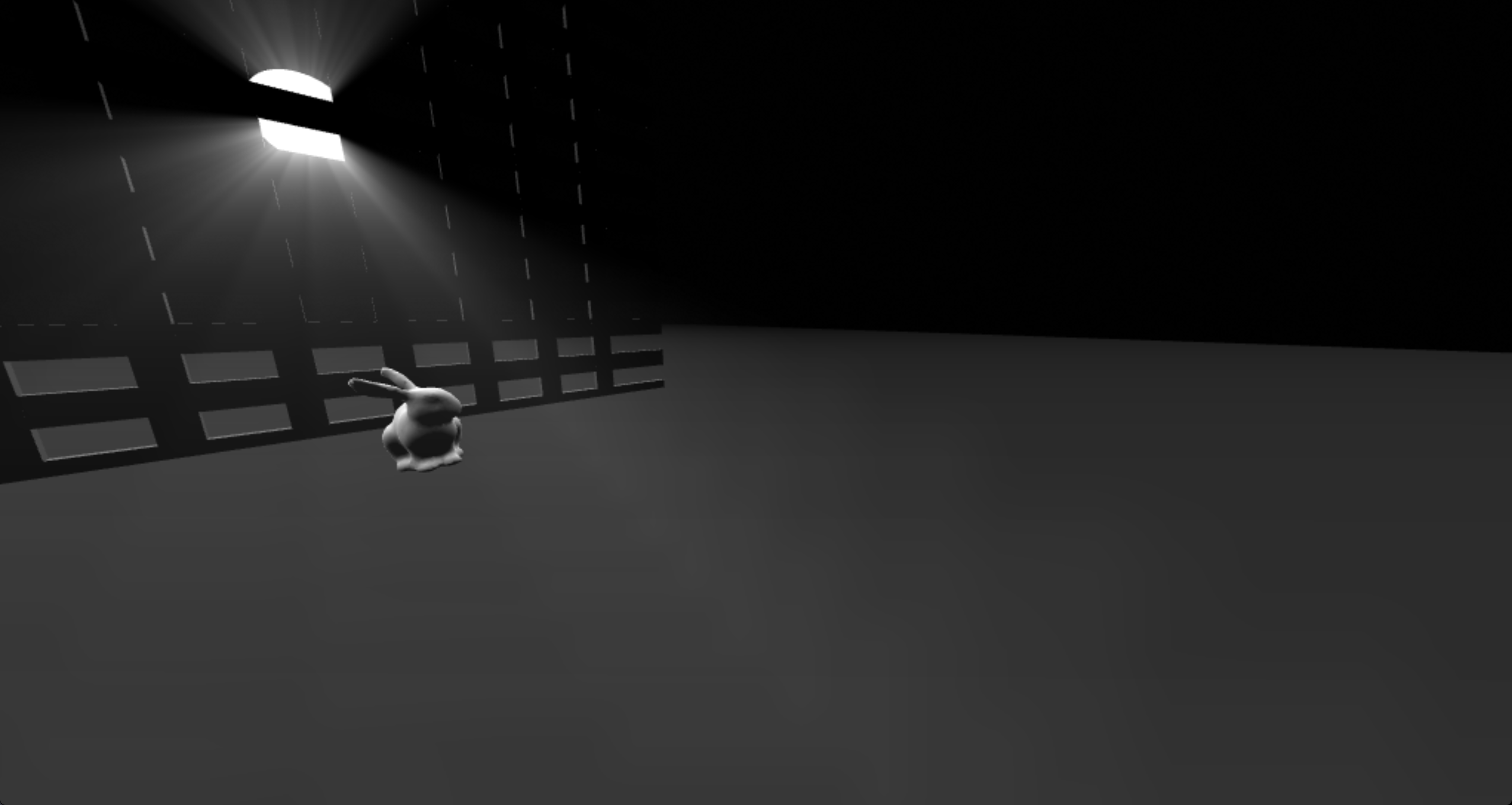1.0.2 • Published 9 years ago
glsl-godrays v1.0.2
glsl-godrays
This module implements the volumetric light scattering effect(godrays) described in "Volumetric Light Scattering as a Post-Process" as a GLSL shader. A demo is provided at: http://erkaman.github.io/glsl-godrays/
The camera in the demo is controlled as follows:
- Keys
WandSare used to walk forward and backward. - Keys
AandDare used to stride left and right. - Keys
OandLare used to fly up and down. - Hold down the key
Mto speed up the camera. - Hold down the left mouse button and move the mouse to turn the camera.

Rendering Setup
In order to implement the effect, no less than three rendering passes will have to be done:
- Pass 1: Render all geometry that could occlude the light source as black. Normally render light source. And render all the above to a texture called the "occlusion texture". Note that this texture does not have to be exactly the size of the screen, but it can be smaller. And by making it smaller, lots of performance can be gained.
- Pass 2: Render everything normally, to the default framebuffer.
- Pass 3: Now enable alpha blending, because we will render the volumetric light rays in a fullscreen pass, and combine them with the scene rendered in pass 2 by simply using alpha blending. Also, as input to pass 3, is the "occlusion texture" that was rendered to in pass 1. This texture is used to ensure that unnatural streaks of light do not appear on objects that are occluding the light source.
For more details, please refer to the source code of the provided demo.
Shader Usage
In the third pass, the godrays are rendered in a fullscreen pass, where every fragment gets its color from the following function:
vec3 godrays(
float density,
float weight,
float decay,
float exposure,
int numSamples,
sampler2D occlusionTexture,
vec2 screenSpaceLightPos,
vec2 uv
);Where the parameters are
densityplease refer to the article "Volumetric Light Scattering as a Post-Process" for a definition of this parameter.weightsee the above.decaysee the above.exposuresee the above.numSamplessee the above. However, note that the maximum value of this parameter is 100!occlusionTexturethe "occlusion texture" created in pass 1.screenSpaceLightPosthe light position in screen space. In the source code of the demo it is shown how this can be calculated.uvthe coordinates of the current fragment. Note thatxandyshould both be in the interval[0,1], over the entire screen.
